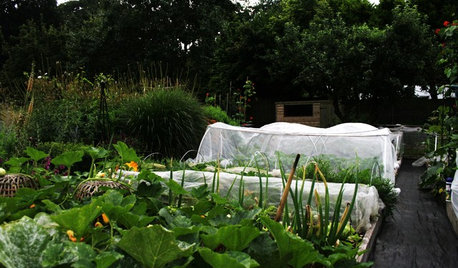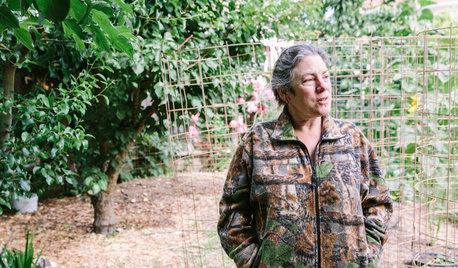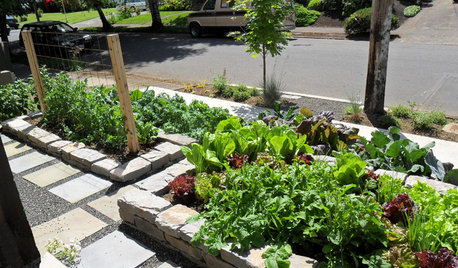worm bed too wet? And, do I mix in the food?
drumorgan
13 years ago
Related Stories

GARDENING GUIDESHouzz TV: Make a Worm Bin for Rich Soil and Happy Plants
A worm-powered compost bin that can fit under a sink turns food scraps into a powerful amendment for your garden. Here’s how to make one
Full Story
EDIBLE GARDENSFood and Community Thrive in a U.K. Allotment Garden
Get a peek at a rented garden plot in England where edibles and flowers mix and local residents can mingle
Full Story
FARM YOUR YARDTo Get the Food They Believe In, These Urbanites Grow Their Own
Home gardeners farming on their city lots find that local, organic food isn’t the only reward
Full Story
HOLIDAYSShow Us Your Party-Time Food and Drink Station
Entertaining season is upon us, and we want to see photos of how you keep guests refreshed
Full Story
FARM YOUR YARD6 Things to Know Before You Start Growing Your Own Food
It takes time and practice, but growing edibles in the suburbs or city is possible with smart prep and patience
Full Story
FRONT YARD IDEASWelcome Edibles Into the Front Yard for Fresh Food and More
Give your front yard design a boost and maybe even make new friends by growing fruits and vegetables
Full Story
GARDENING GUIDESYes, You Can Grow Food in a Shady Yard
Your shady garden doesn’t have to be forever barren. Berries, herbs and other shade-loving plants can produce a delicious bounty
Full Story
GARDENING GUIDESVegetables and Flowers Mix in Beautiful Edible Gardens
Ornamentals, meet your edible garden mates. We know you'll get along just beautifully
Full Story
ECLECTIC HOMESHouzz Tour: Styles and Eras Mix in a Former Stable Block
Modern touches balance bountiful antiques in a beautifully eclectic home that housed horses in the 1700s
Full StoryMore Discussions







equinoxequinox
drumorganOriginal Author
Related Professionals
Franconia Landscape Architects & Landscape Designers · Medford Landscape Contractors · Canby Landscape Contractors · Fair Lawn Landscape Contractors · Mequon Landscape Contractors · Midland Landscape Contractors · Rancho Santa Margarita Landscape Contractors · West Orange Landscape Contractors · Shenandoah Landscape Contractors · De Pere General Contractors · Florham Park General Contractors · Lakewood Park General Contractors · Orangevale General Contractors · Saginaw General Contractors · Troutdale General Contractorsjoe.jr317
drumorganOriginal Author
11otis
drumorganOriginal Author
PeterK2
diggerjones
susanfromhawaii